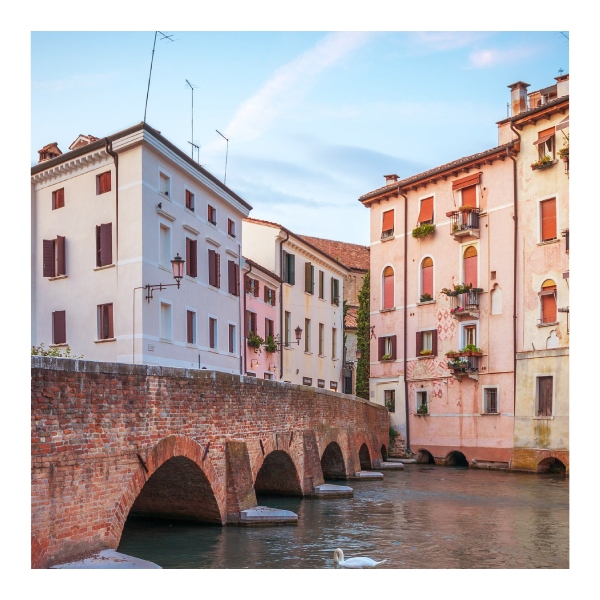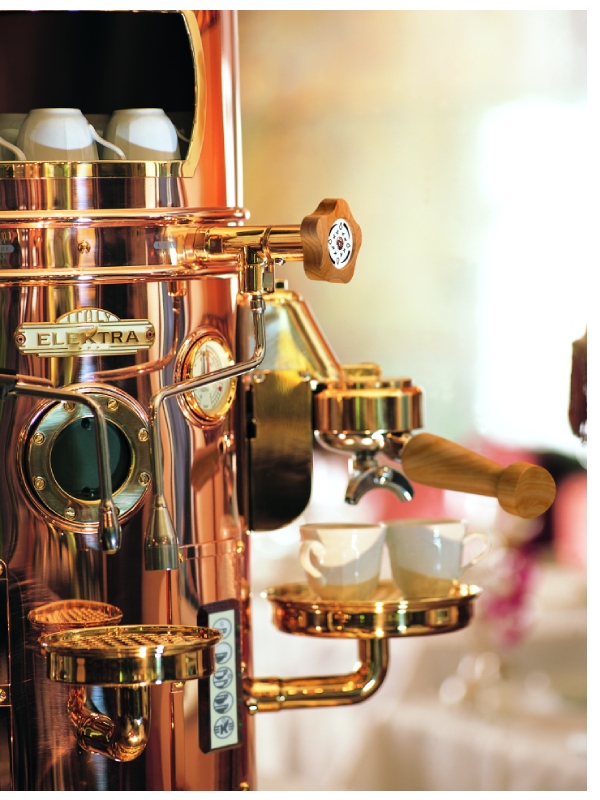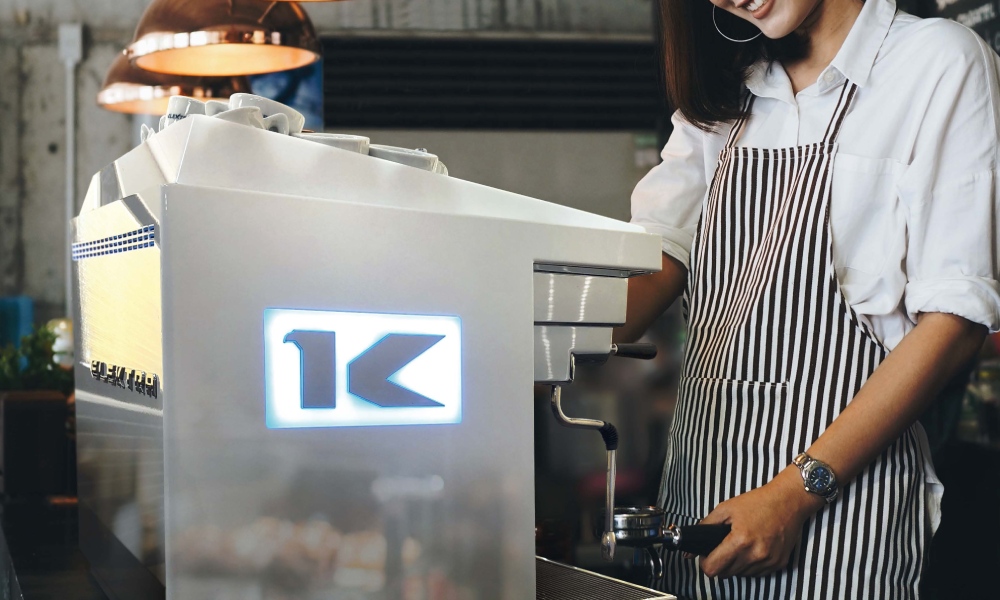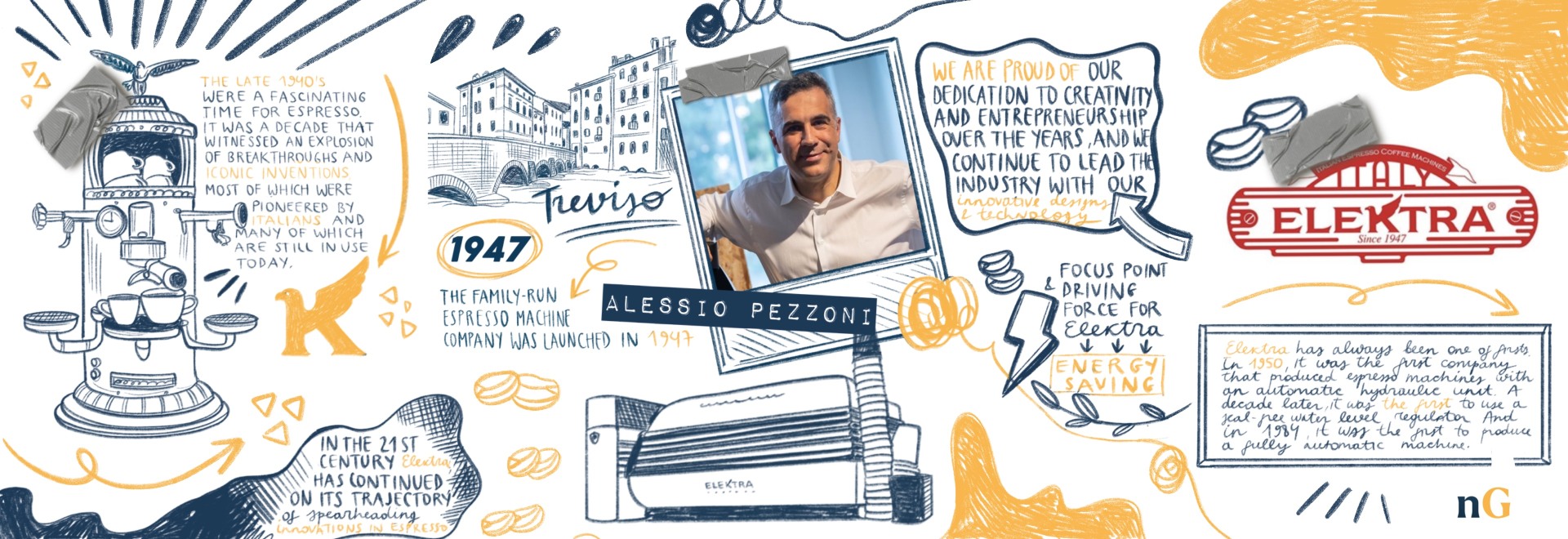Italy is still the most innovative country in the world for coffee
The CEO of Elektra Coffee, Alessio Pezzoni, explains how a small town in Italy has been at the heart of some of the most groundbreaking innovations in espresso for nearly 80 years.
If you’ve ever been to Treviso in northeastern Italy, you’ll know that it is a city where the past meets the present. Within the medieval fortified walls are cobbled streets, 14th-century churches, and timeless canal which form the backdrop to the vibrant everyday life of locals.
However, what is even more striking about Treviso is its authenticity. Despite being so close to Venice, Treviso has held onto its Italian heritage which can be felt at every turn and down every narrow street.
This is where Elektra was born more than seven decades ago. The family-run espresso machine company, of which I am now proud to be CEO, was launched in 1947. And from its very first machine, it was obvious that it was never going to be simply a story of a company and its products. Elektra embodied – and continues to embody – Italy, its people, and its dedication to craftsmanship.

The late 1940s was a fascinating time for espresso. It was a decade that witnessed an explosion of breakthroughs and iconic inventions, most of which were pioneered by Italians and many of which are still in use today.
It was when the first commercial piston to generate high pressure for coffee was invented in Milan, giving us crema – the thin layer of foam that we now wouldn’t drink espresso without. It was also around the time that the word “cappuccino” was coined. (It was named after the Capuchin friars who wore robes with a colour resembling that of espresso mixed with frothed milk!)
Elektra was an important part of this period of enlightenment in Italy. With the original machine – the Belle Epoque – Umberto Fregnan, the founder of the company, showed that espresso machines could also be works of art.
His models were instantly recognisable for their visually striking designs that looked more like sculptures than espresso machines. They were marked out not only for their ability to produce superior quality coffee, but as statement pieces wherever they were placed.
Building these espresso machines required technique and craftsmanship along with a vision – a philosophy, almost. What’s more, the Fregnan family drew on their Italian coffee heritage and merged it with the latest trends in the market to leverage the technological innovations of the day. This is an approach that the company has stayed true to for over 75 years.

Pioneers of true Italian espresso
Elektra has always been one of firsts. In 1950, It was the first company to produce espresso machines with an automatic hydraulic unit. A decade later, it was the first to use a seal-free water level regulator. And, in 1984, it was the first to produce a fully automatic machine.
Funnily enough, vintage espresso machines are what seem to be capturing the imaginations of young consumers today. The Belle Epoque, for example, with its copper and brass-plated exterior and elegant eagle-topped dome can be found splashed across social media feeds around the world.
It’s something about the golden era of espresso that obviously resonates. I know that when I look at a heritage-style Elektra machine, it can transport me to a little caffè nestled in a small town in Italy – even if I’m on the other side of the world. Coffee does that.
Even so, in the 21st century, Elektra has continued on its trajectory of spearheading innovations in espresso. And nowhere has this been more evident than the Elektra KUP – arguably the most excited I have been about a new model since I took on the position of CEO.
It is a beautiful machine with all the attention to detail you would expect from Elektra. But, like its forebears, the KUP intertwines the latest trends with its respect for its Italian heritage by producing quality espresso-based drinks, too.
It caters, most importantly, to that modern need for human interaction. Too often, I’ve seen baristas with so little time they can barely look up at who they are serving. Automation, in that respect, has become a key part of ensuring customers come back time and again. After all, coffee shops are not just about making coffee. People can do that so easily at home these days that you have to make it worth their while visiting a coffee shop.
The KUP’s automated steaming and extraction means baristas can let the machine get on with things in the background while they chat with customers. Both the extraction and steaming will finish when ready – it’s not like you will be chatting to someone and keeping the machine in your periphery to stop it all spilling over.
Another focus point and driving force for Elektra over the last few years has been on energy saving. It was essential for us to build this into the future of the company given the impact that climate change will have on coffee production if it continues the way it is.
However, rising energy costs have made this aspect of Elektra machines even more important. I’ve heard a lot of stories about how coffee shops are struggling with much higher energy costs than even a few months ago – so any way to cut usage is vital.
Energy saving doesn’t mean only having an eye for the ethical production chain though. It’s also about building a long-life product that allows us to save energy in the long term. It’s no good if the machine breaks down in a year or two. We want to create technology that lasts.

The future of espresso machines
As someone who has worked in the coffee and service sectors for a number of years, I’m often asked what I think the future of the industry will look like. Sometimes it has been easy to offer predictions, with certain trends staring us all in the face; other times it has been more difficult, with the pace of change so fast and erratic it can be difficult to put your finger on.
Right now, I feel confident that in the case of espresso machines at least, there will be two major trends that will shape the way we brew our coffee.
The first trend will be the continued development of automation systems. Thanks to brands like Elektra and Carimali, these have become increasingly ingrained into the specialty coffee industry in the last few years.
The logical next stage is fine-tuning precise settings for the machine and further developing the quality of the final cup. With the help of automation technology, the espresso machine will be able to offer a perfectly brewed cup of coffee every time, whoever is using it.
The second trend will be the addition of more functionality to enhance the flexibility of the machine. This trend will be driven by the desire to increase the uniqueness of the extraction process by combining the skills of the barista with the machine’s flexibility. As a result, the machine will be capable of producing a broader range of coffee-based drinks, offering greater customisation and personalisation to meet individual preferences. In both cases, the focus will always be on the design and compactness of the machine.
At Elektra, we are proud of our dedication to creativity and entrepreneurship over the years. The team at Vea Ventures has spearheaded our impact in the 21st-century, and we will continue to lead the industry with our innovative designs and technology. We are committed to staying ahead of the curve and delivering machines that exceed our customers’ expectations.
As we look towards the future, I invite coffee enthusiasts to keep an eye out for Elektra’s future models, not least the KUP. We are excited to be at the forefront of this industry and look forward to shaping the future of espresso machine technology for years to come.







